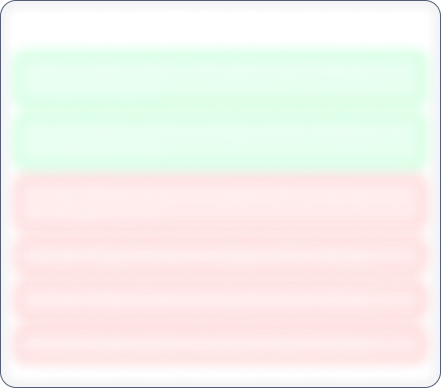Year End Sale 50% off
T & I Global

No Data Available
Investor Sentiment
T & I Global Share price and Fundamental Analysis
Key Metrics
Included In
Stock Returns
Stock Heatmap

No Stocks
Smart Score

Unlock Smart Score
See Detailed Analysis & Insights


Unlock Insights
See Detailed Analysis & Insights
Technicals
Returns Calculator
If you would have investedResearch Report
No Research Report
Corporate Action
Financials
Key Ratios
ROE
Avg ROE (3 Yrs) : NaN%
ROCE
Avg ROCE (3 Yrs) : NaN%
ROA
Avg ROA (3 Yrs) : NaN%
NPM
Avg NPM (3 Yrs) : NaN%
Dividend History
5 Year FactSheet
Documents

No Data Available
News
T & I Global Management and History
Company Management


Unlock Management Data
See Detailed Analysis & Insights
Company History
T & I Global Ltd (TIGL)., a T & I Group company was incorporated as a private limited company in Jan. 1991. Later it was converted into a public limited company in Aug. 1994 and fresh Certificate of Incorporation was obtained in Sep. 8, 1994.
The Company is a leading manufacturer and exporter of Tea Processing Machinery with the expertise to supply Customised processing equipment for CTC, Orthodox & Green Tea. The Company is a family-run business and was established in 1949 by the industrious Bagaria family hailing from Assam, India. Over the years, the Group launched many innovative products and value additions for the tea industry, as well as Customized Drying Solutions for the food and chemical industries.
TIGL has two full fledged manufacturing facilities in India - at Kolkata the capital city of West Bengal, and at Coimbatore, the industrial city of Tamil Nadu. Their high-capacity Coimbatore unit is equipped to manufacture super size multiple module dryers and withering machines. The 45,000 sq.feet of well lit and ventilated shop floor area allows for large assemblies of multiple processing lines.
The company manufactures and exports tea processing machinery since its incorporation. Machinery Exports are made to tea growing countries including Bangladesh, Sri Lanka, Papua-New Guinea, Mauritius, Kenya, Tanzania, Uganda, Malawi, Iran, Turkey and Australia.
The company diversified into tea business by entering the area of tea plantation. It had set up a factory at Jalpaiguri, West Bengal, to manufacture 10 lac kg per annum of made tea. The company tapped the capitalmarket for financing the project by making a public issue in January,1995.In 2000-01, the company has expanded the land area of plantation by purchasing another 32 hectares of land and it has also expanding the plantation area by developing new plantation in another 33.60 hectares.
The Commercial production of Green Tea was commenced during 2001-02. During 2003-04, the Company sold CTC Tea manufacturing unit commonly known as Teatops India. It further started Tea Machinery manufacturing at Kolkata. It further setup a CTC Tea Factory at its Mainak Hills Tea Estate with a capacity of producing 600000 Kgs of CTC Tea per year with a total invest of about Rs. 2 Crores during 2006-07.
T & I Global Share Price
T & I Global share price reflects investor sentiment toward the company and is impacted by various factors such as financial performance, market trends, and economic conditions. Share price is an indicator which shows the current value of the company's shares at which buyers or sellers can transact.
T & I Global Market Cap
Market capitalization of T & I Global indicates the total value of its outstanding shares. Marketcap is calculated by multiplying share price and outstanding shares of the company. It is a helpful metric for assessing the company's size and market Valuation. It also helps investors understand how T & I Global is valued compared to its competitors.
T & I Global PE Ratio
T & I Global PE ratio helps investors understand what is the market value of each stock compared to T & I Global 's earnings. A PE ratio higher than the average industry PE could indicate an overvaluation of the stock, whereas a lower PE compared to the average industry PE could indicate an undervaluation.
T & I Global PEG Ratio
The PEG ratio of T & I Global evaluates its PE ratio in relation to its growth rate. A PEG ratio of 1 indicates a fair value, a PEG ratio of less than 1 indicates undervaluation, and a PEG ratio of more than 1 indicates overvaluation.
T & I Global ROE (Return on Equity)
Return on Equity (ROE) measures how effectively T & I Global generates profit from shareholders' equity. A higher ROE of more than 20% indicates better financial performance in terms of profitability.
T & I Global ROCE (Return on Capital Employed)
Return on Capital Employed (ROCE) evaluates the profitability of T & I Global in relation to its capital employed. In simple terms, ROCE provides insight to investors as to how well the company is utilizing the capital deployed. A high ROCE of more than 20% shows that the business is making profitable use of its capital.
T & I Global Total Debt
Total debt of T & I Global shows how much the company owes to either banks or individual creditors. In simple terms, this is the amount the company has to repay. Total debt can be a very useful metric to show the financial health of the company. Total debt more than equity is considered to be a bad sign.
T & I Global Debt to Equity Ratio
The Debt-to-Equity (DE) ratio of T & I Global compares its total debt to shareholders' equity. A higher Debt to Equity ratio could indicate higher financial risk, while a lower ratio suggests that the company is managing its debt efficiently.
T & I Global CAGR (Compound Annual Growth Rate)
CAGR shows the consistent growth rate of T & I Global over a specific period, whether it is over a month, a year, or 10 years. It is a key metric to evaluate the company’s long-term growth potential. Main metrics for which CAGR is calculated are net sales, net profit, operating profit, and stock returns.
T & I Global Technical Analysis
Technical analysis of T & I Global helps investors get an insight into when they can enter or exit the stock. Key components of T & I Global Technical Analysis include:
Support Levels (S1, S2, S3)
There are usually multiple support levels, but the main support levels for a stock are S1, S2, S3. Support levels indicate price points where stock might get support from buyers, helping the stock stop falling and rise.
Resistance Levels (R1, R2, R3)
There are usually multiple resistance levels, but the main resistance levels for a stock are R1, R2, R3. Resistance levels represent price points where T & I Global shares often struggle to rise above due to selling pressure.
T & I Global Dividends
Dividends refer to the portion of the company’s profits distributed to its shareholders. Dividends are typically paid out in cash and reflect T & I Global ’s financial health and profitability.
T & I Global Bonus Shares
Bonus shares are usually given by companies to make the stock more affordable, increase liquidity, boost investor confidence, and more.
T & I Global Stock Split
Stock split increases the number of its outstanding shares by dividing each existing share into multiple shares. When the company offers a stock split, the face value of the stock reduces in the same proportion as the split ratio.
T & I Global Financials
The financials of T & I Global provide a complete view to investors about its net sales, net profit, operating profits, expenses, and overall financial health. Investors can analyze financial data to assess the company’s stability and also understand how the company has been growing financially.
T & I Global Profit and Loss Statements
The profit and loss statement of T & I Global highlights its net sales, net profit, total expenditure, and operating profits in the current financial year. This Profit and Loss statement is crucial for evaluating the profitability and financial stability of T & I Global .
T & I Global Balance Sheet
The balance sheet presents a snapshot of T & I Global ’s assets, liabilities, and equity of shareholders, providing insights into the financials of the company.
T & I Global Cashflow Statements
Cashflow statements track the company's cash inflows and outflows over a period. It is an essential tool for understanding how well the company manages its liquidity and finances.


